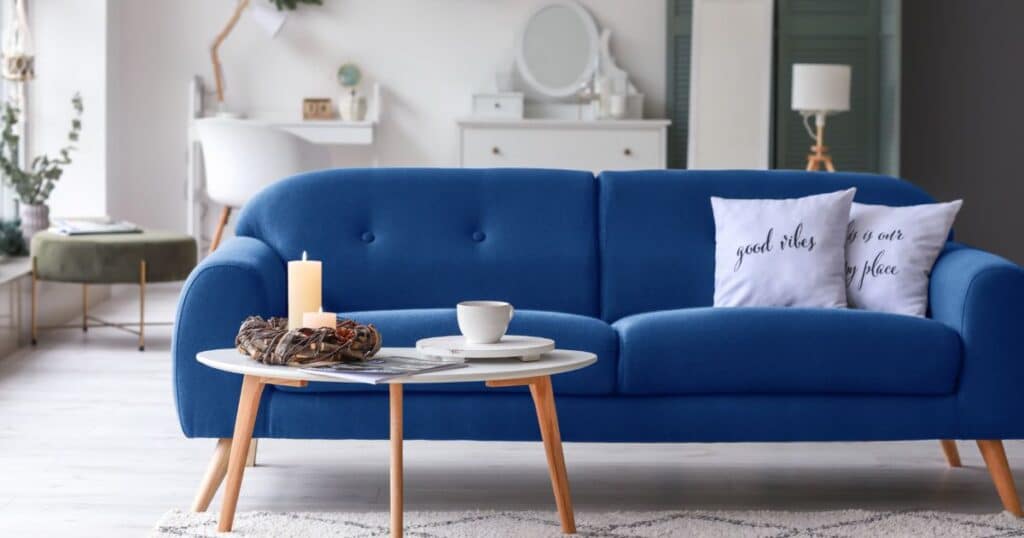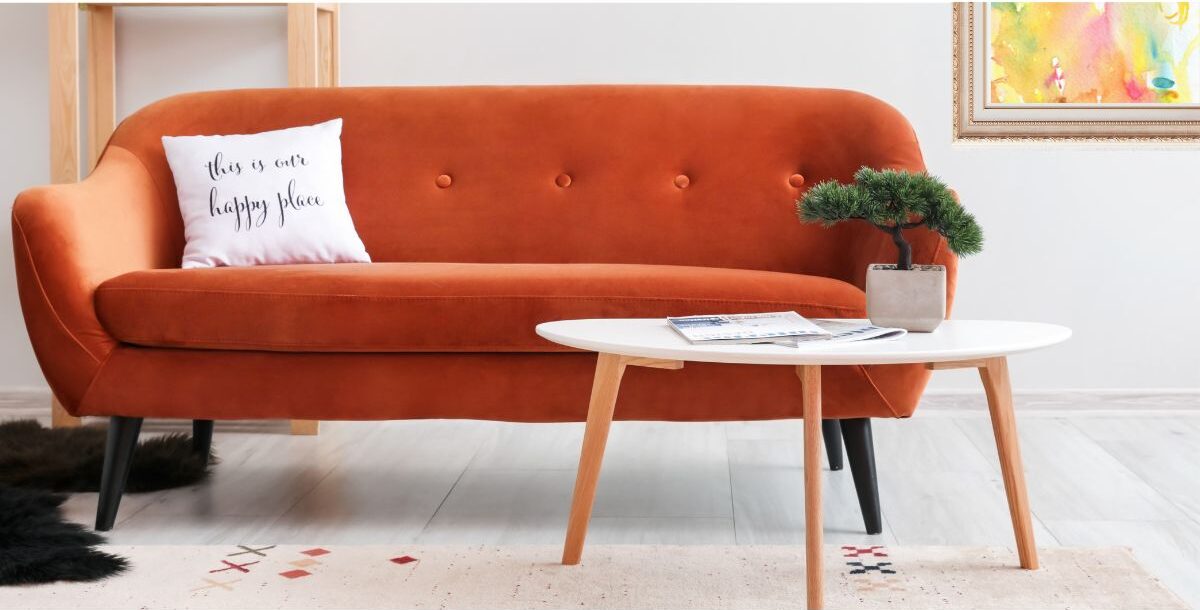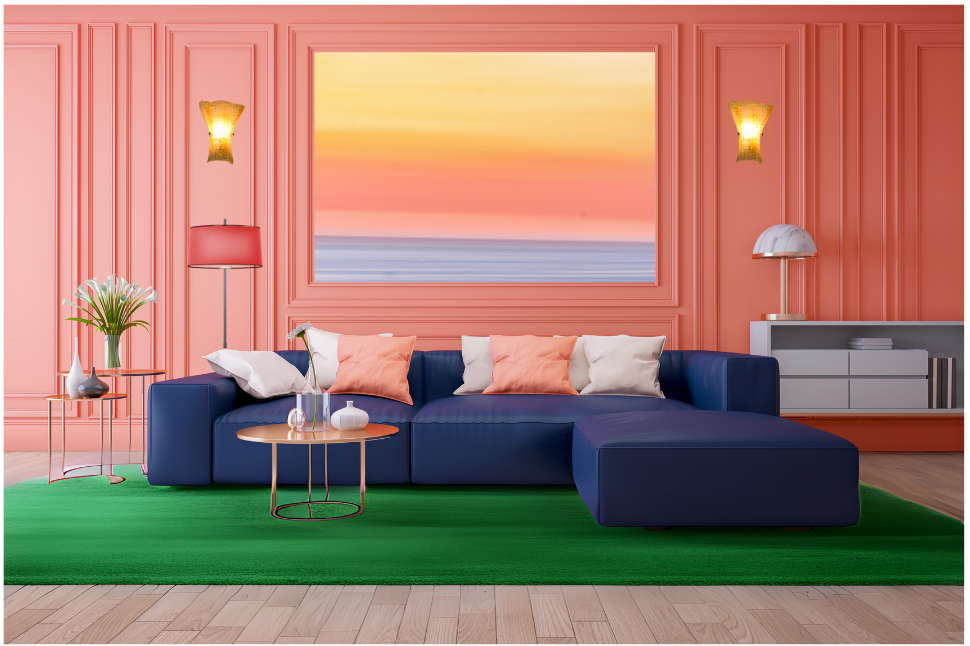As in a rainbow, the color spectrum is the arch of colors we can see when light is separated. Even more interesting is that we can actually separate this spectrum into “two” categories based on how the colors make us “feel”.
Cool colors, such as blues and greens, are soothing, whereas warm colors, such as red, orange, and yellow, are energetic. Learn more about colors and their associations, including what rooms they work best in and what rooms to avoid.
Quick Note: It is not always necessary to paint the entire room with the recommended color. A color accent can be painted on one wall, used as wallpaper, or incorporated into decor, furniture, and finishes. Additionally, you should consider the various shades of the same color and select one that complements your décor.
Cool Tone Colors And Their Meanings

BLUE: A calming and serene color often associated with tranquility, peace, and stability.
GREEN: A refreshing and soothing color that evokes nature, health, and balance.
PURPLE: A rich and mysterious color associated with royalty, spirituality, and often used to add elegance.
TURQUOISE: A cool and calming color reminiscent of the ocean, often associated with tranquility and serenity.
GRAY: A neutral color that creates a cool and sophisticated atmosphere, often associated with stability and maturity.
SILVER: Sophistication, modernity, and sleekness.
WHITE: A clean and refreshing color associated with purity, simplicity, and innocence.
Green
Growth, fertility, money, nature, hope, optimism and freshness.
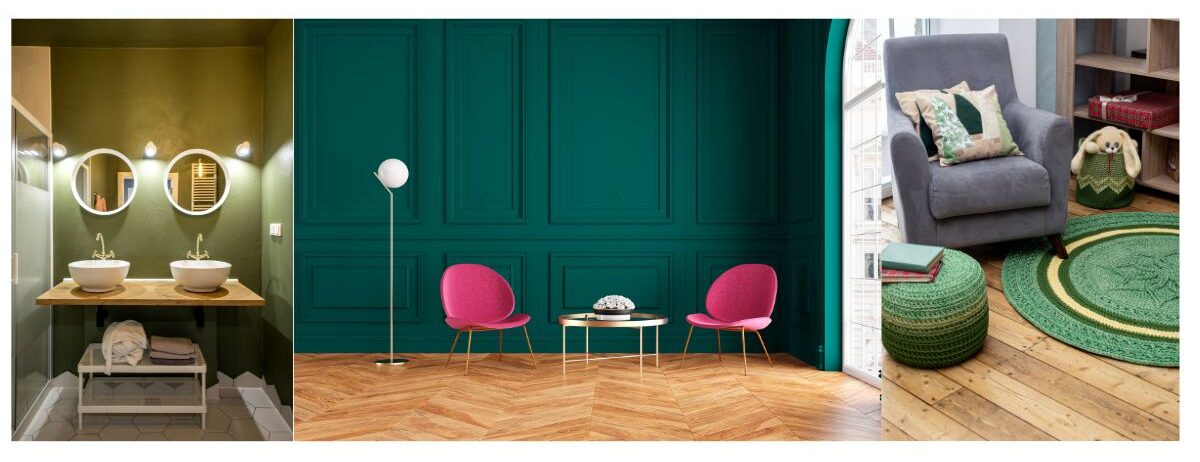
Bedrooms
Green in bedrooms promotes a peaceful and calm atmosphere, which leads to better sleep. Lighter greens, such as soft sage and muted mint, can be used on walls, bedding, and furniture to create a relaxing space.
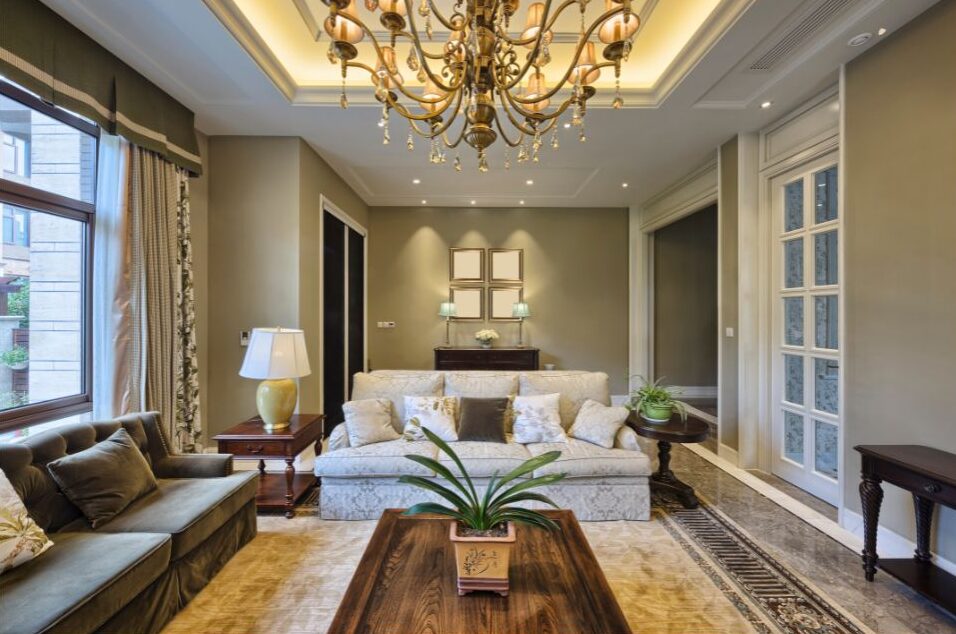
Living Rooms: Green can be used in family rooms to create a fresh atmosphere. An accent chair or throw pillow in a green color can add a pop of color and a touch of nature to your living room. Living rooms with green walls, whether painted or wallpapered, are calming, especially in areas with abundant natural light.
Home Offices: Green accent pieces or accent walls can reduce stress and promote concentration in home offices. To add sophistication and elegance to your home office, choose a darker shade of green, such as emerald or forest green.
Yoga/Meditation Rooms: The color green is associated with tranquility and renewal, making it an ideal color for yoga or meditation rooms. The presence of green walls, area rugs, plants or furniture can create a calming and grounding environment that is conducive to mindfulness and relaxation.
Areas To Avoid When Using Green
Hospitals or medical facilities: Bright or intense green shades are not recommended in hospitals or medical facilities. Colors like these might make patients feel unwell. A more calming and healing environment can be created by adding greenery through plants or artwork.
Dining Room: An excessive amount of green can create an unappetizing atmosphere in the dining room.
Exercise or Gym Areas: This may not be the best option for areas where motivation, energy, and physical activity are the main priorities.
Waiting or Reception Areas: Green may be calming, but it may also conjure up feelings of waiting or stagnation, especially in places where people feel anxious or impatient.
Blue
Education, knowledge, trust, calmness, relaxation and power.

Bedrooms: Blue can be applied to the walls, bedding, art, or furniture to make your space feel peaceful and calming. Using gentle blue tones like pale blue or powder blue will create a relaxing atmosphere. Using light blues such as sky blue or pastel blue will create a serene environment.
Bathrooms: Tiles, walls, and accessories in blue can create a refreshing atmosphere that evokes cleanliness . To create a spa-like ambiance, use shades like aqua or turquoise to create a rejuvenating ambiance.
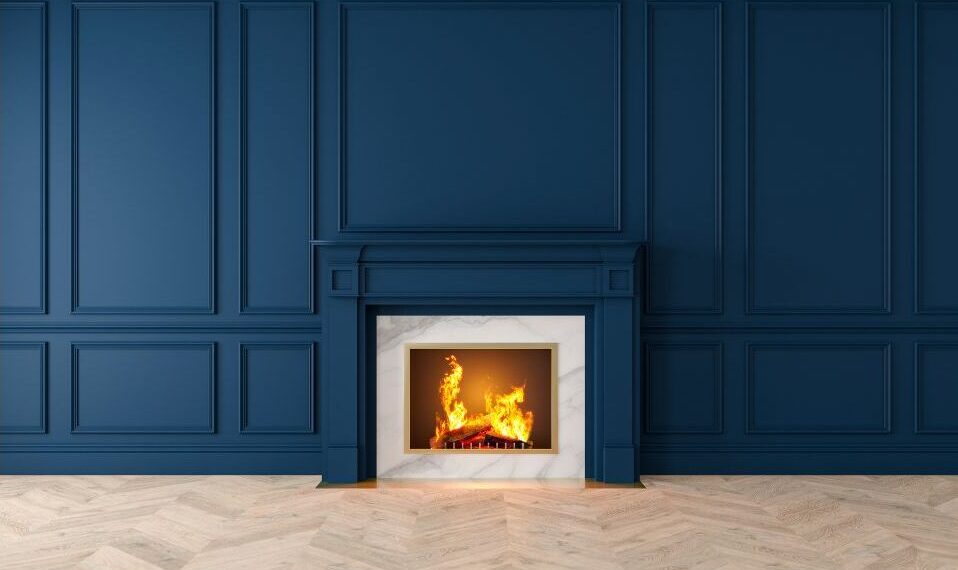
Living Rooms: Blue can be used as an accent wall color, sofa color, accent chair color, or throw pillow color in living rooms to add elegance and sophistication. Coastal or beachy vibes are best achieved with lighter shades of blue; drama and depth can be achieved with darker shades like navy or indigo.
Nursery/Children’s Rooms: Blue can be used on walls, bedding, or decor to create a soothing environment for nursery and children’s rooms. To create a serene and peaceful ambiance, use soft blue shades.
Meditation/Yoga Rooms: Use blue for walls, floor mats, or accessories to create a serene environment for mindfulness practice in meditation or yoga rooms. Using light shades of blue, such as baby blue or sky blue, helps with relaxation and concentration.
Offices: Blue enhances productivity and focus. Office spaces often use it to stimulate clear thinking. Use deeper shades of blue, such as navy or royal blue, to create a professional atmosphere.
Areas To Avoid When Using Blue
Dining Rooms: Because blue suppresses appetite, it may not be the best choice for dining rooms where socializing and stimulating appetite are important.
Kitchens: Like dining rooms, blue is not commonly used in kitchens because it suppresses appetite. In contrast to their association with freshness, blue can make food look less appetizing, so using blue in the kitchen should be avoided.
Home Gyms or Exercise Rooms: Blue is a calming color, which may not be suitable for spaces where you want a stimulating, energetic atmosphere.
Workspaces Requiring High Productivity: Although blue can be calming, some shades can appear too relaxing or even gloomy. If the space requires high productivity and focus, colors like yellow and green may be a better choice.
Hospitals/Medical Facilities: The color blue is generally avoided in healthcare settings due to its association with sadness or coldness. To create a welcoming environment for patients, hospitals use warmer and more comforting colors.
Purple
Royalty, wealth, spirituality, wisdom, mystery, and magic.
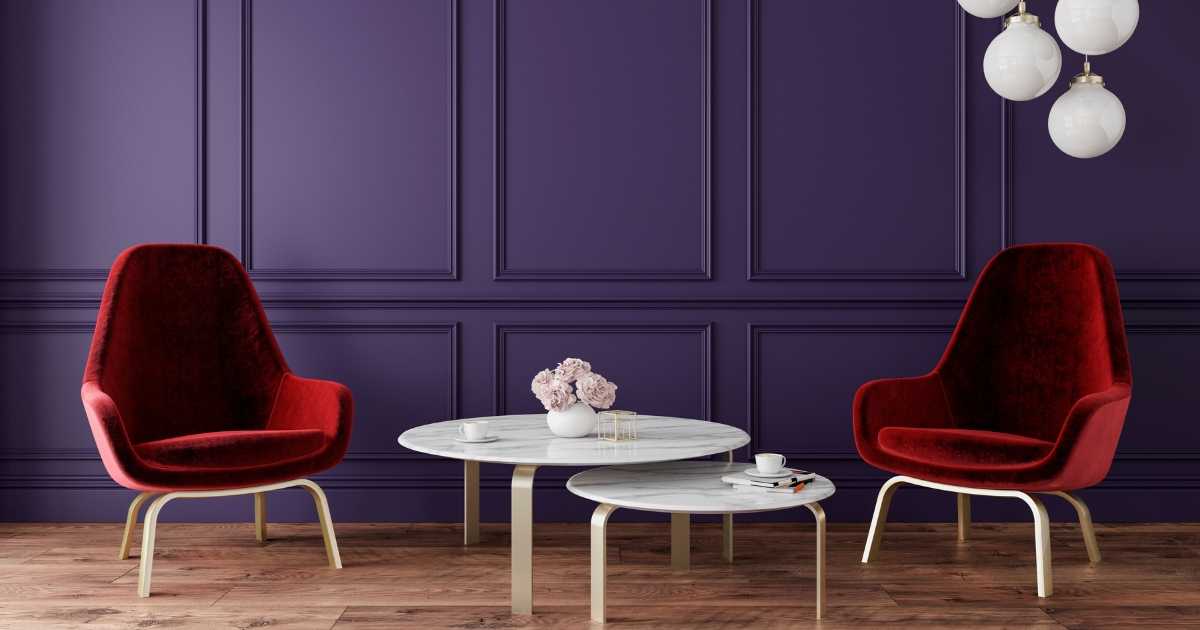
Dining Rooms: Purple displays a luxurious and extravagant ambiance in dining rooms, creating a sense of indulgence and sophistication. To create an opulent and regal look, choose jewel-toned purple shades, such as amethyst or plum.
Living rooms: Purple can add a pop of color and create a luxurious and inviting atmosphere in living rooms. It works well as an accent color for throw pillows, curtains, and artwork.
Powder Rooms: Purple walls, vanity cabinets, and accessories can add a sense of drama and glamour to powder rooms. For a luxurious and opulent look, consider metallic purple or glossy violet finishes.
Spaces for Creativity: Purple is often associated with creativity and inspiration. As it stimulates creativity and encourages productivity, it is an ideal choice for home offices, studios, or craft rooms.
Bedrooms: Utilize purple for walls, area rugs, bedding, or decor in bedrooms to create an ambiance of opulence and romance, as it’s often associated with royalty. For a rich and dramatic effect, use purple shades such as royal purple or eggplant.
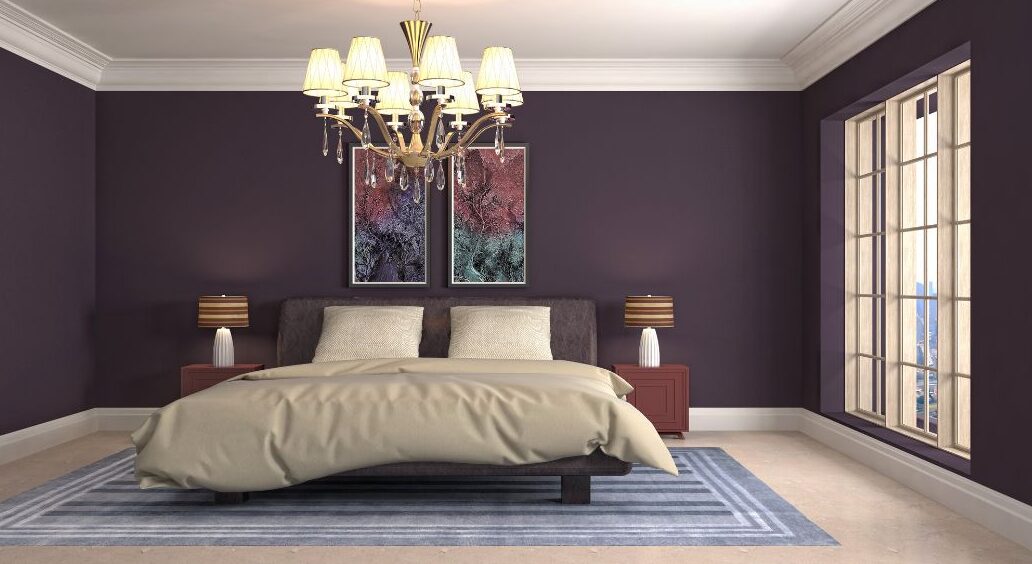
Areas To Avoid When Using Purple
Bathrooms or Kitchens: Purple may not be an appropriate color choice for bathrooms or kitchens, due to its bold and overpowering appearance. These areas typically benefit from more neutral or bright colors that create a clean and refreshing ambiance.
Children’s Rooms or Playrooms: Purple can sometimes be associated with a more mature or sophisticated aesthetic, and may not be suitable for children’s rooms or playrooms that need a more playful atmosphere. Consider lighter purple shades.
Small or Dark Rooms: Dark and intense shades of purple may make small or dark rooms feel closed-in and cramped. In such spaces, it’s better to use lighter colors that create a brighter and more open feel.
Turquoise
Youthful energy, creativity, joy, and soulfulness.
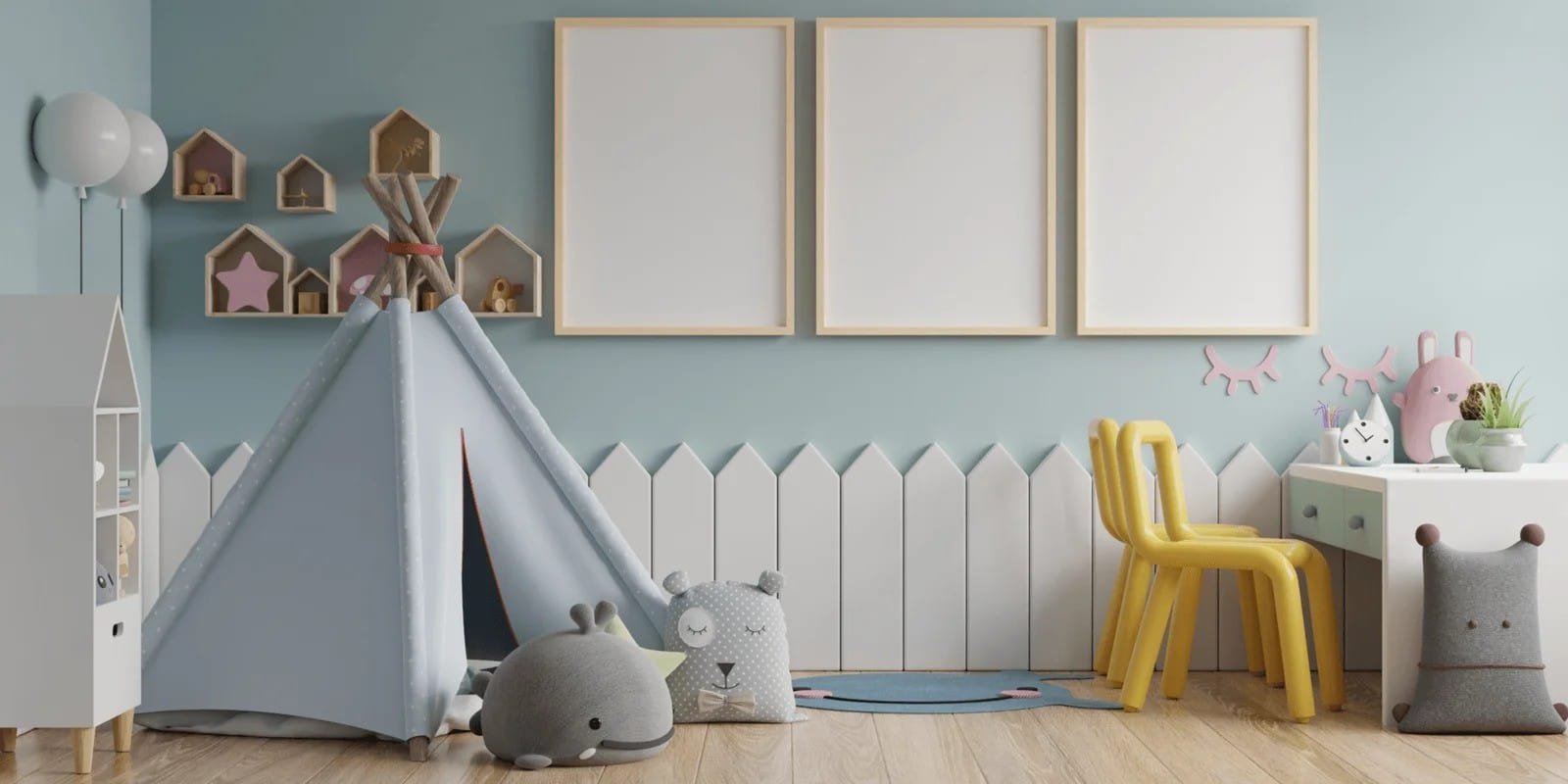
Coastal-Themed Rooms: Turquoise is often associated with beachy and coastal vibes, making it an ideal choice for nautical or coastal themed rooms. For a fresh, vibrant, and relaxed atmosphere reminiscent of the ocean, use turquoise on walls, furniture, or decor.
Kids’ Rooms: For a fun and playful atmosphere in kids’ rooms, turquoise can be used on walls, bedding, or decor. For a pop of color in a predominantly white or neutral room, consider turquoise as an accent color. For a bright, cheerful look, you can also make it the main color.
Outdoor Spaces: Adding turquoise to outdoor furniture, cushions, or decor creates a refreshing and inviting atmosphere, whether it is on a patio, deck, or balcony. If you want to create a beachy, tropical vibe, combine turquoise with natural materials like wood or rattan. For a bold, playful contrast, pair it with bright colors, such as orange or pink
Areas To Avoid When Using Turquoise
Formal Dining Rooms or Formal Settings: Turquoise may not be appropriate for formal dining rooms or formal settings that require a more sophisticated and elegant ambiance. These spaces may be better suited to deep blues, dark greens, or rich neutrals.
Rooms with Warm or Earthy Tones: Turquoise is a cool-toned color that may not go well with warm or earthy color palettes. In rooms with warm-toned furniture, flooring, or decor, turquoise may clash with the overall color scheme.
Rooms with a Minimalistic or Monochromatic Aesthetic: The vibrant color turquoise may not go well with minimalistic or monochromatic aesthetics that emphasize simplicity and restraint. In such spaces, lighter or more subdued colors may be preferred.
Gray
Elegance, neutrality, practicality, timelessness, and sophistication.

Living Rooms: Gray can be used on walls, sofas, or rugs to create a timeless and elegant ambiance in living rooms. Consider using different shades of gray, such as charcoal, dove gray, or greige, to add depth and dimension to the space. Gray can also serve as a neutral backdrop for other colors, allowing you to easily switch up your decor and accessories.
Home Offices: Gray can be used on walls, desks, or shelving to create a clean, modern, and professional atmosphere in home offices. Consider using lighter gray shades for a fresh and minimalist look. You can also pair it with pops of color, such as yellow or teal, for a vibrant and creative feel. Gray can also reduce visual distractions, making it an ideal choice for a productive workspace.
Dining Rooms: Gray can be used on walls, dining chairs, or table linens to create a refined and sophisticated atmosphere in dining rooms. Consider using darker shades of gray, such as slate or pewter, for a moody and dramatic effect. You can also pair it with bold colors, such as mustard yellow or emerald green, for a striking and contemporary contrast.
Nursery or Kids’ Rooms: Gray can be used on walls, cribs, or decor to create a gender-neutral and modern look in nurseries or kids’ rooms. Consider using lighter shades of gray for a soothing and calming atmosphere. Pair it with pops of color, such as pastel pink or baby blue, for a playful and cheerful vibe. Gray can also be easily updated as the child grows, making it a versatile choice for kids’ spaces.
Contemporary kitchens: Gray/silver can add a sleek and modern touch to kitchens, especially when paired with contrasting elements like white cabinets or stainless steel appliances.
Areas To Avoid When Using Gray & Silver
Restaurants or eateries: Gray/silver can dampen appetite and create a less inviting ambiance, potentially affecting the dining experience.
Rooms with Limited Natural Light: Gray can sometimes make rooms with limited natural light feel darker or more dreary, especially if used in darker or muted shades. In such spaces, it’s better to use lighter shades of gray or pair gray with brighter accents. This will create a more uplifting and welcoming ambiance.
Playful or Energetic Spaces: Gray may not be the most appropriate choice for rooms with a playful or energetic ambiance, such as children’s playrooms or recreational areas. Gray can sometimes be perceived as too serious or formal for such spaces, and other colors like bright colors or pastels may be more appropriate.
Rooms Requiring a Vibrant or Lively Atmosphere: Gray is a neutral color that creates a calm and understated ambiance. If you’re looking to create a vibrant or lively atmosphere in a room, such as a party area or entertainment space, gray may not be the right choice as it may not convey the desired energy or excitement.
White
Clarity, purity, light, goodness, innocence, safety, crisp, new beginnings, simplicity and openness
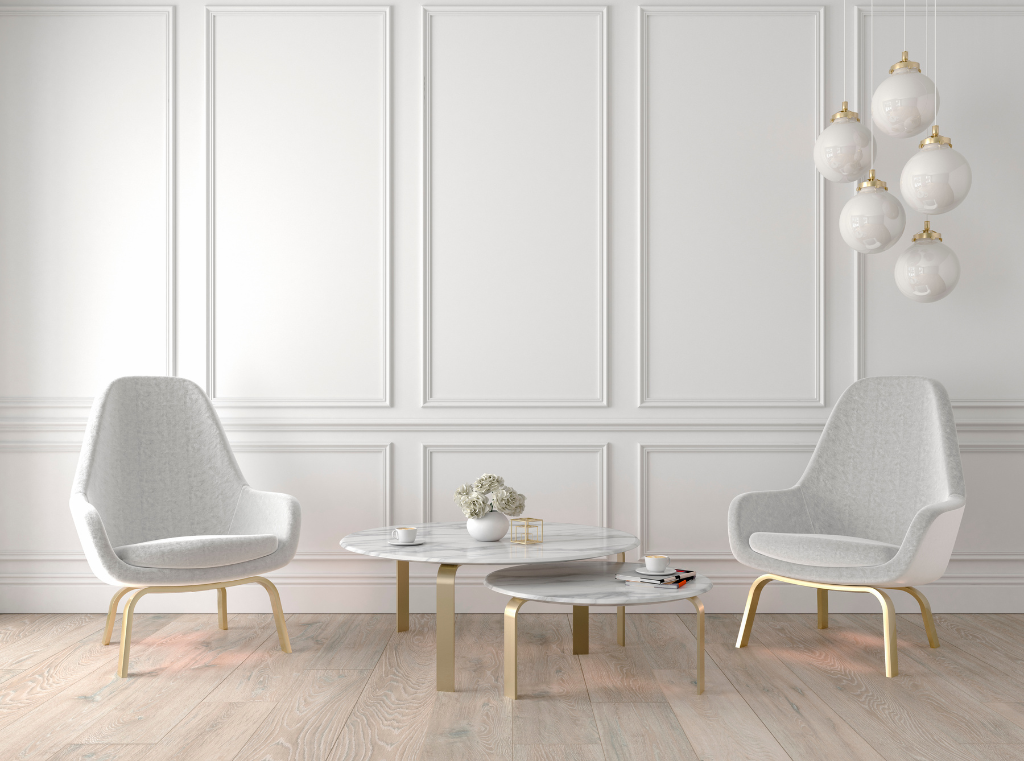
Bedrooms: White walls, bedding, and furniture can create a calm, serene, and peaceful atmosphere. Consider using white in different textures, such as linen or cotton, for a layered and inviting look. Also, white can serve as a versatile backdrop for a variety of decor styles, including minimalist, farmhouse, and Scandinavian.
Small spaces: White can give the illusion of space and airiness by making small rooms appear larger.
Living Rooms: White walls, sofas, and rugs can create a bright, airy, and fresh ambiance in living rooms. To create a cohesive and timeless look, combine white with beige or light gray. Natural light can also be reflected by white surfaces, making the space appear larger and brighter.
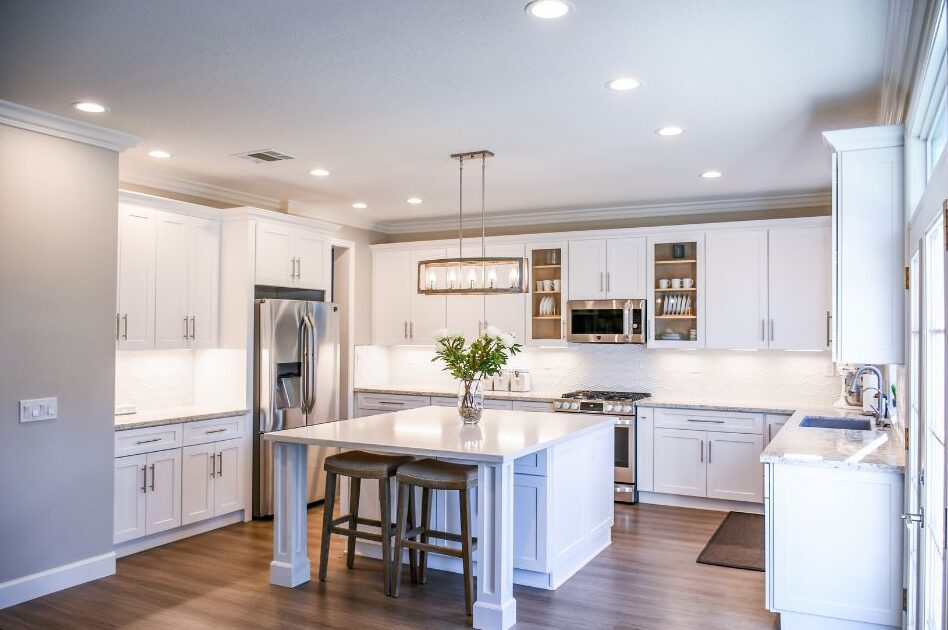
Kitchens: White cabinets, countertops, and backsplashes can be used to create a clean, modern, and timeless kitchen. Depending on your style, consider white in a matte or glossy finish. Use it with other colors, such as navy blue or black, for a striking contrast. Adding white to a small kitchen can also make it appear more spacious and bright.
Art galleries & minimalist inspired spaces: White walls provide a neutral background for artworks to stand out. Ideal for minimalist-inspired spaces, it creates a clean, clutter-free aesthetic.
Home Offices: Walls, furniture, and accessories can be painted white to create a clean, organized, and focused environment. If you want a minimalist and distraction-free environment, use white as the dominant color, or pair it with pops of color, such as yellow or green, for a vibrant and energetic vibe. A small home office can also feel brighter and more spacious by using white.
Areas To Avoid When Using White
High-Traffic Areas or Rooms Prone to Stains: White is more likely to show dirt, stains, and wear than other colors. It is not recommended to use white in high-traffic or spill-prone areas, such as children’s playrooms, kitchens, and dining areas, as it may require frequent maintenance and cleaning.
Rooms with Bold or Vibrant Color Schemes: White can appear stark or overly bright in rooms with bold or vibrant color schemes. Using softer or muted neutrals in a room with rich or intense colors will balance and harmonize the color scheme.
Rooms Requiring Privacy or Intimacy: White conveys openness and transparency, which may not be ideal in rooms requiring privacy or intimacy, such as bedrooms. Using warmer or more subdued colors may create a more cozy and private atmosphere in such spaces.
It’s interesting to note that black is considered a warm color by color theory and white is considered a cool color. This is due to the fact that white conveys a feeling of spaciousness and openness, whereas black creates an intimate, intimate feeling.
To create a cozy, warm atmosphere in your space, think about incorporating some black elements. Alternatively, you can choose white to make your space seem more spacious and airy.

